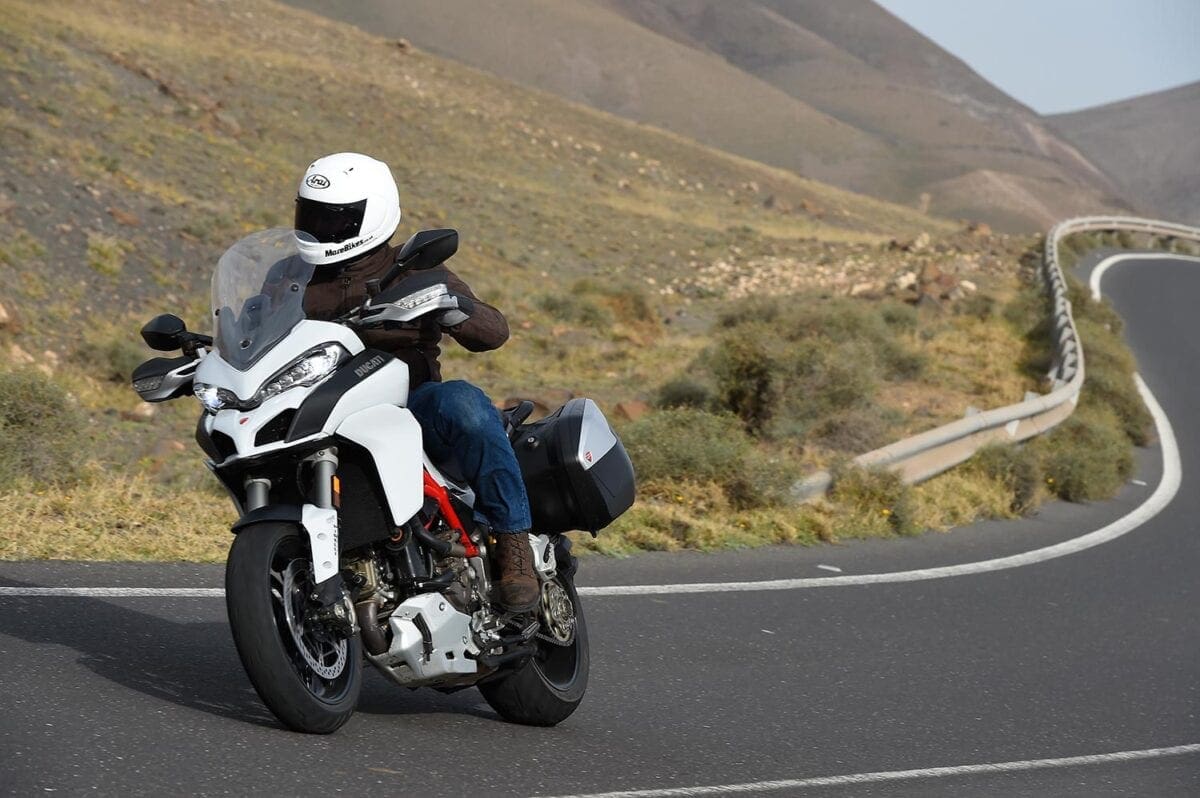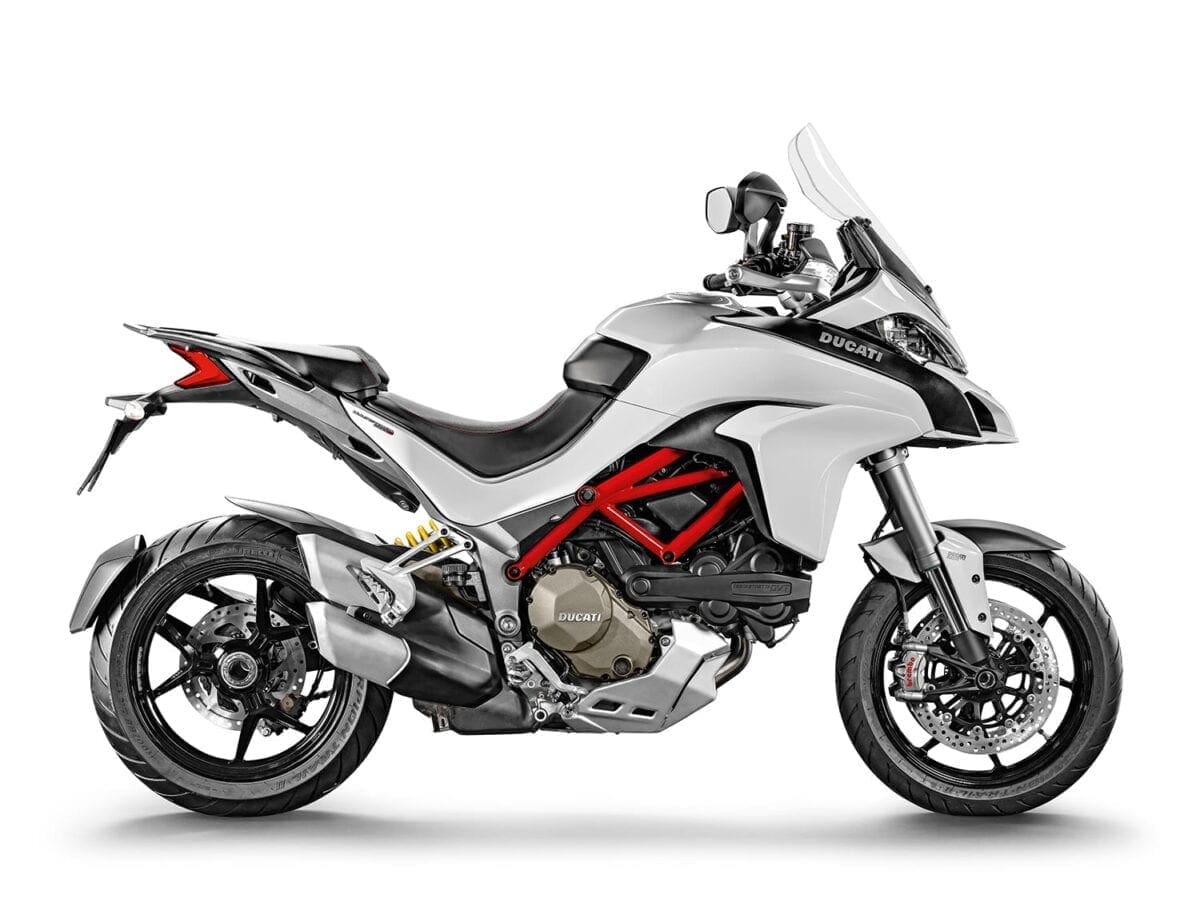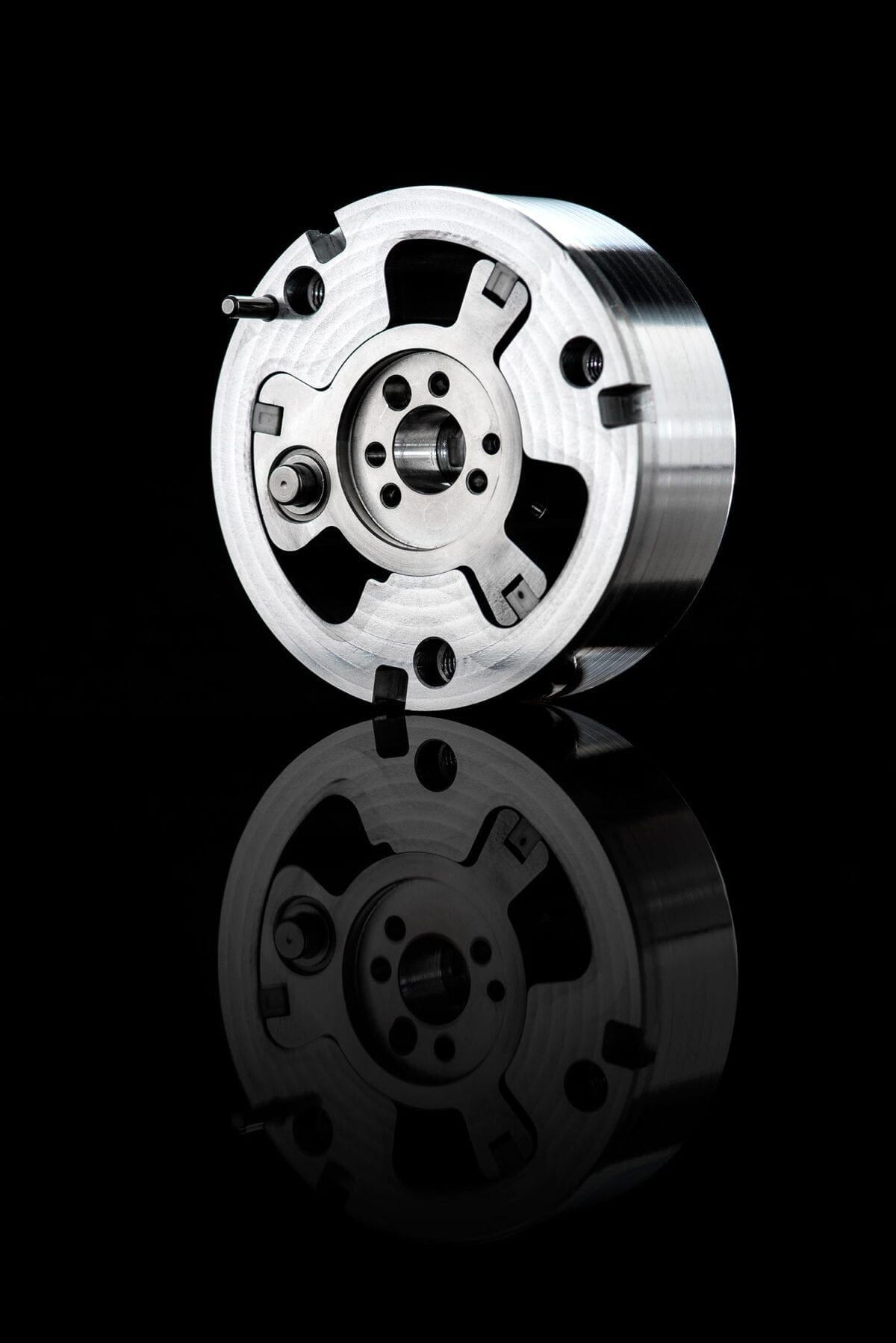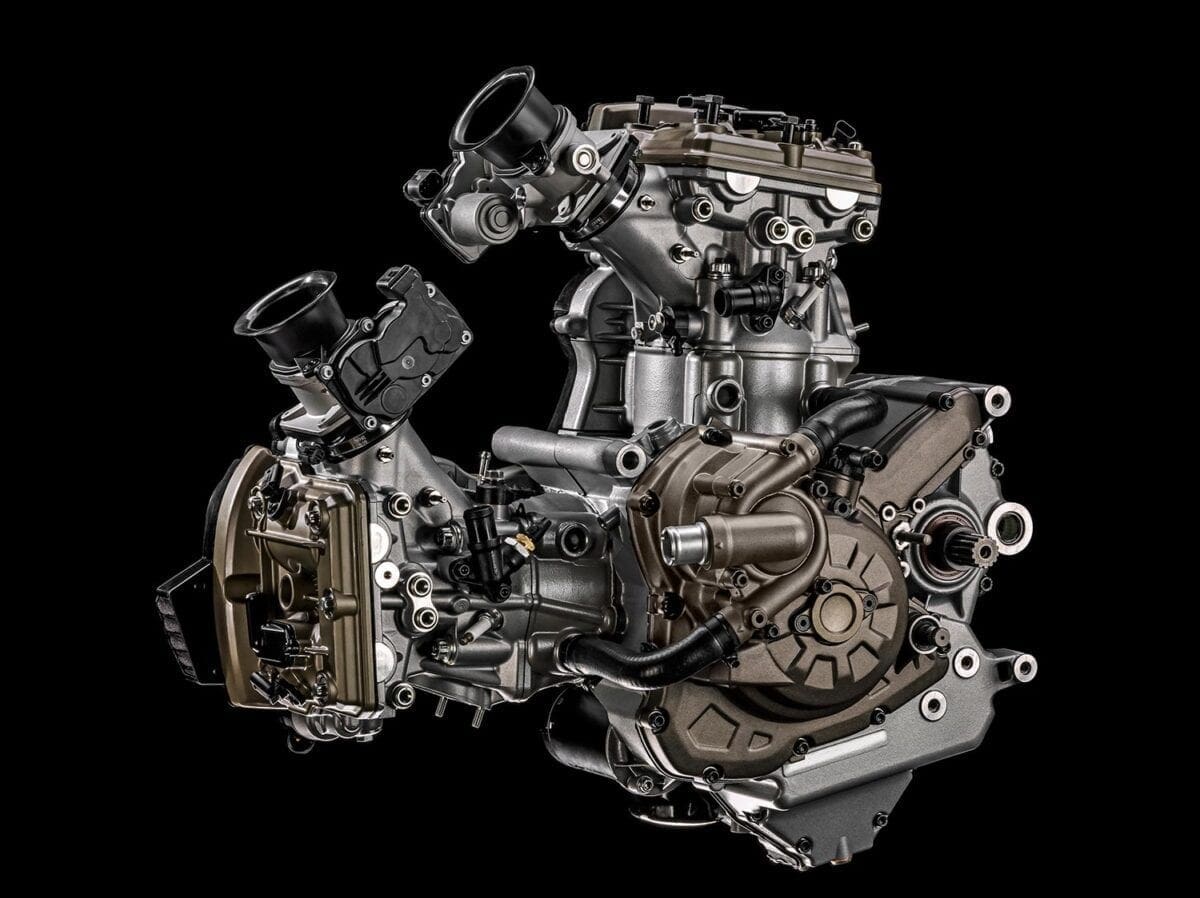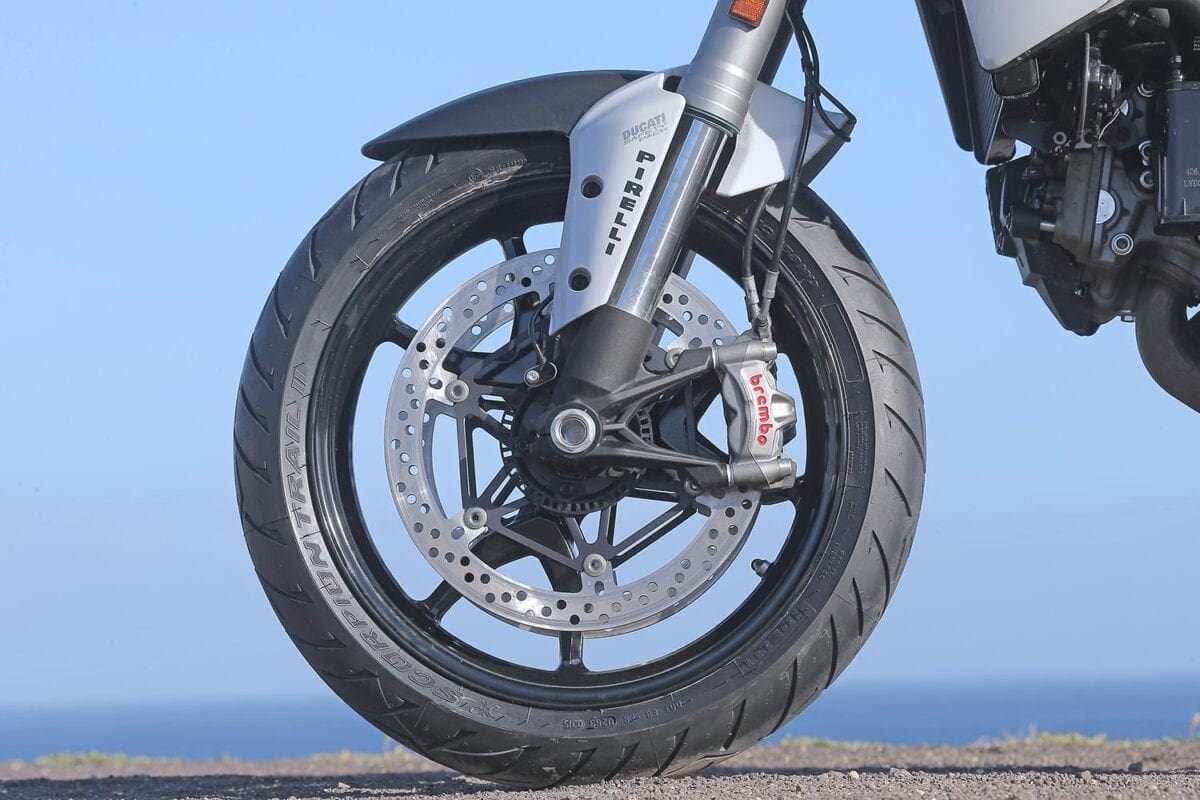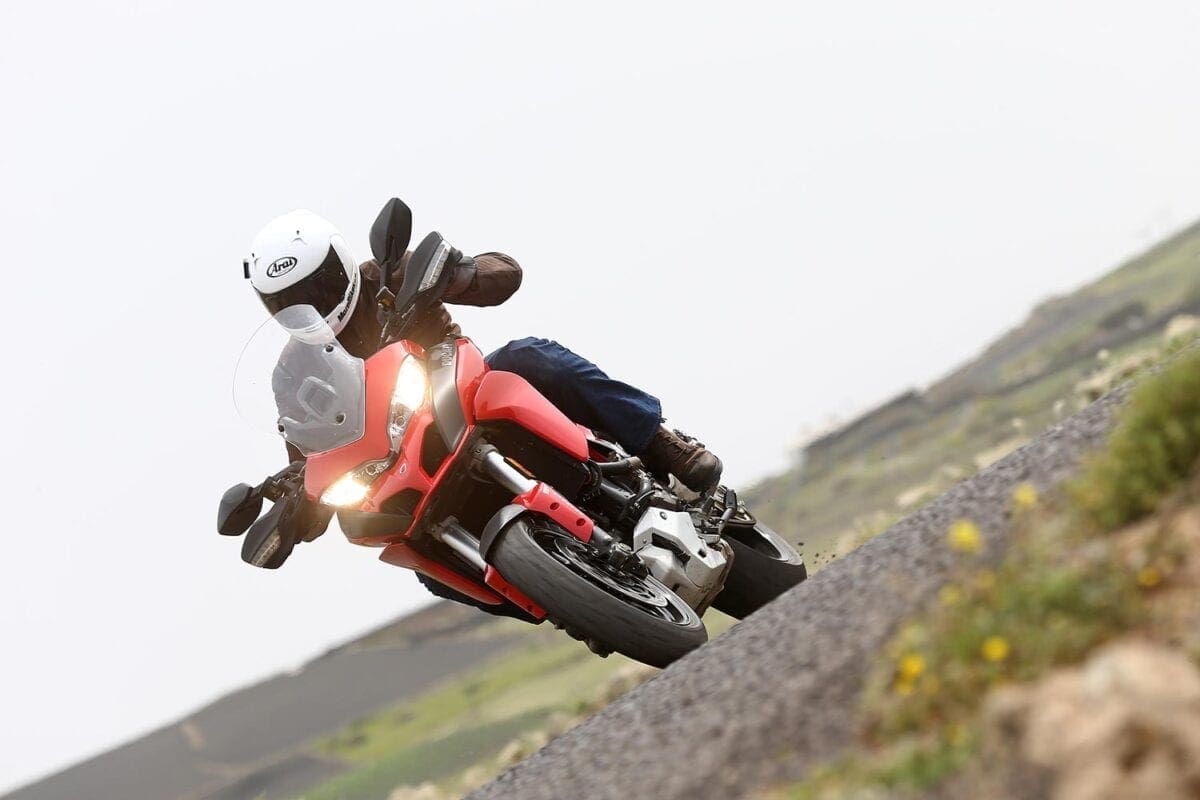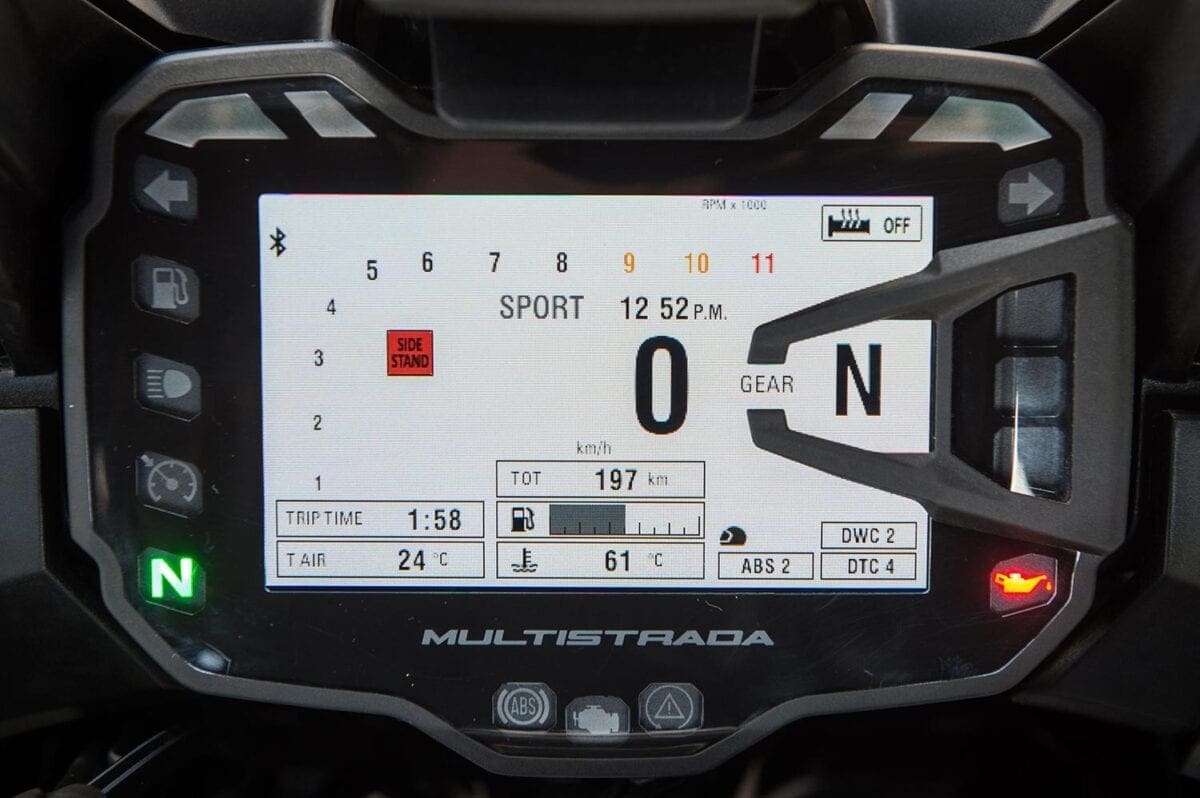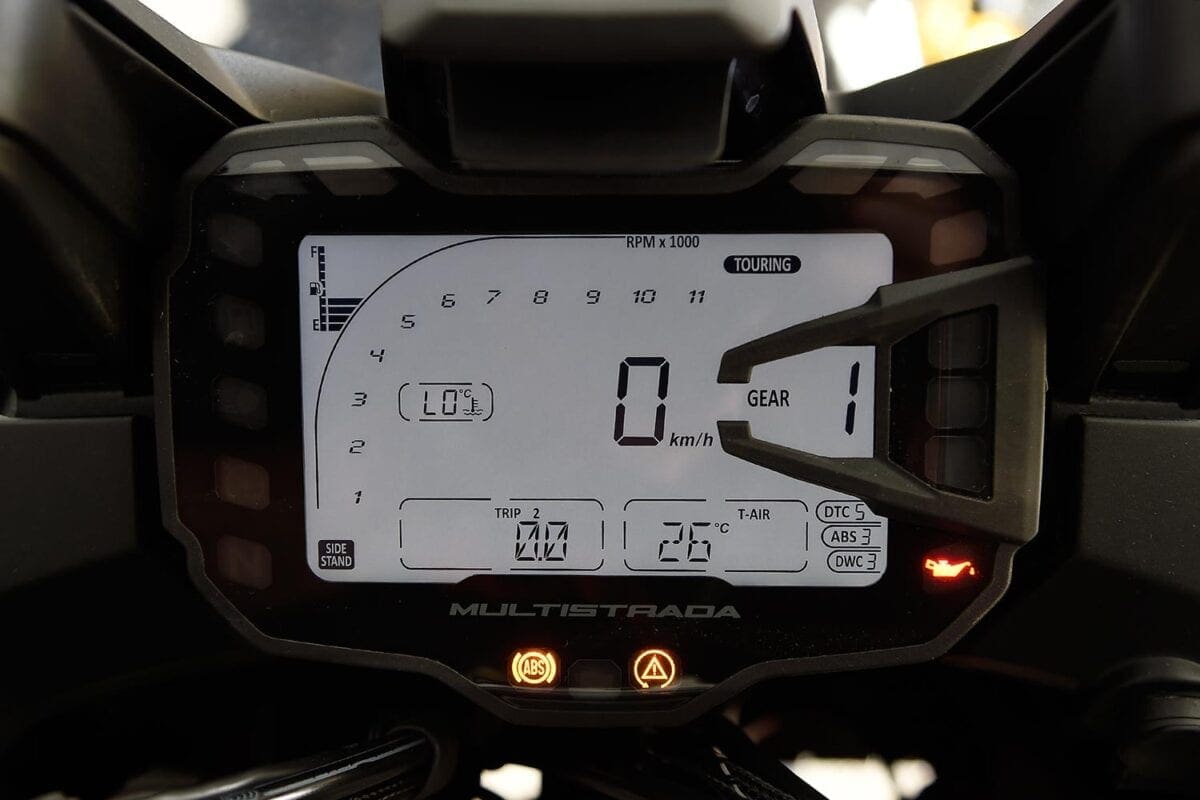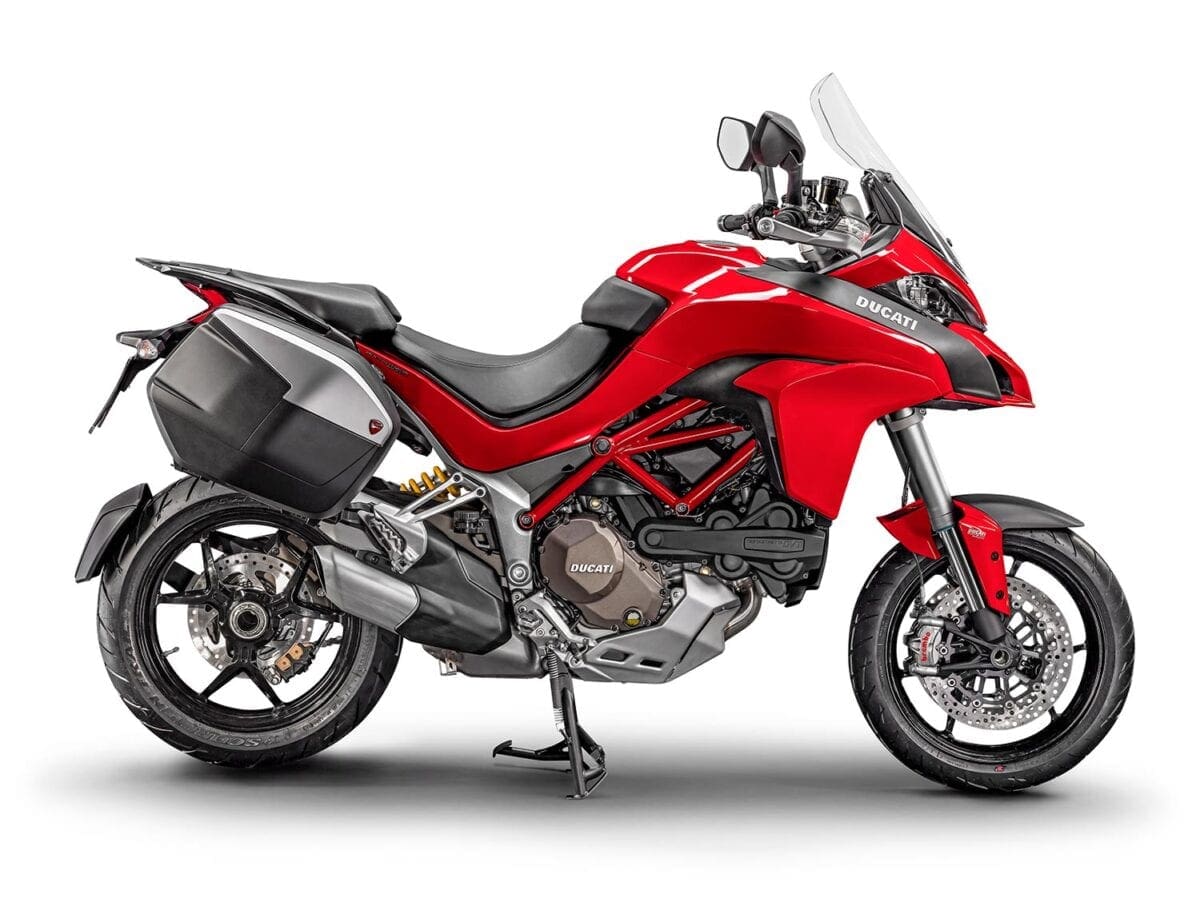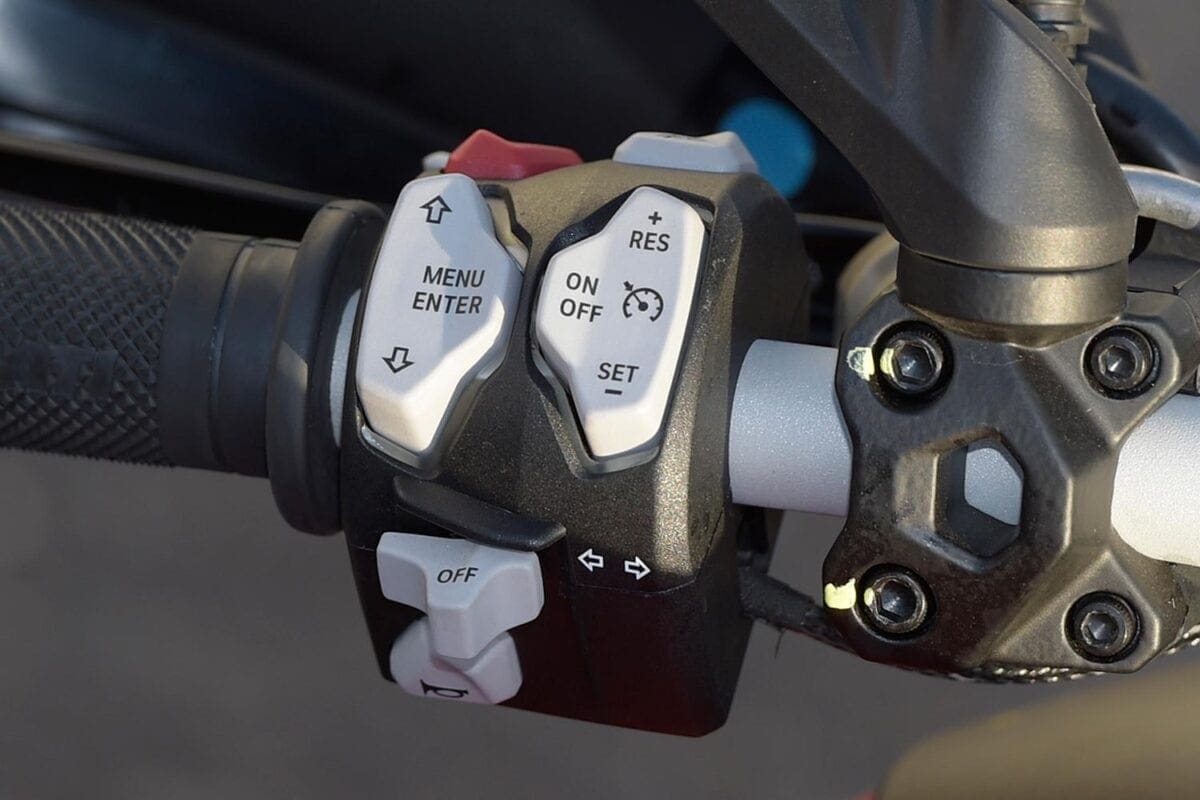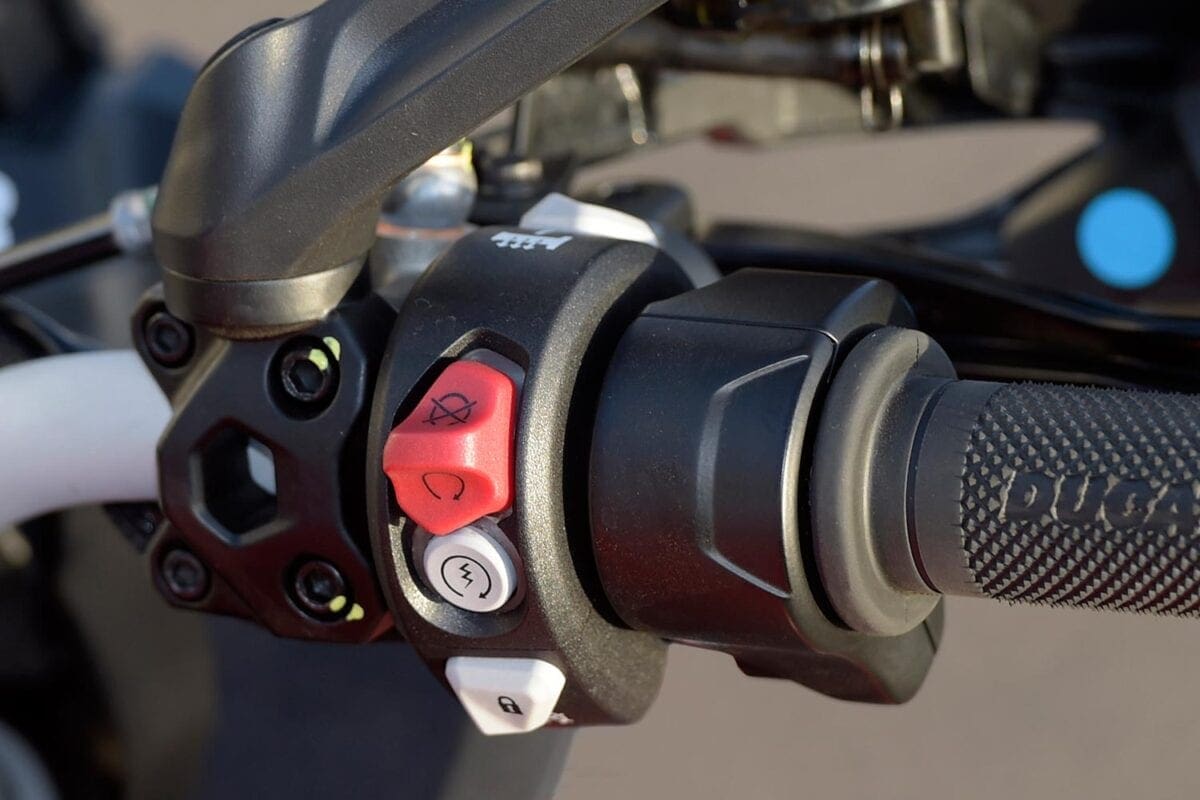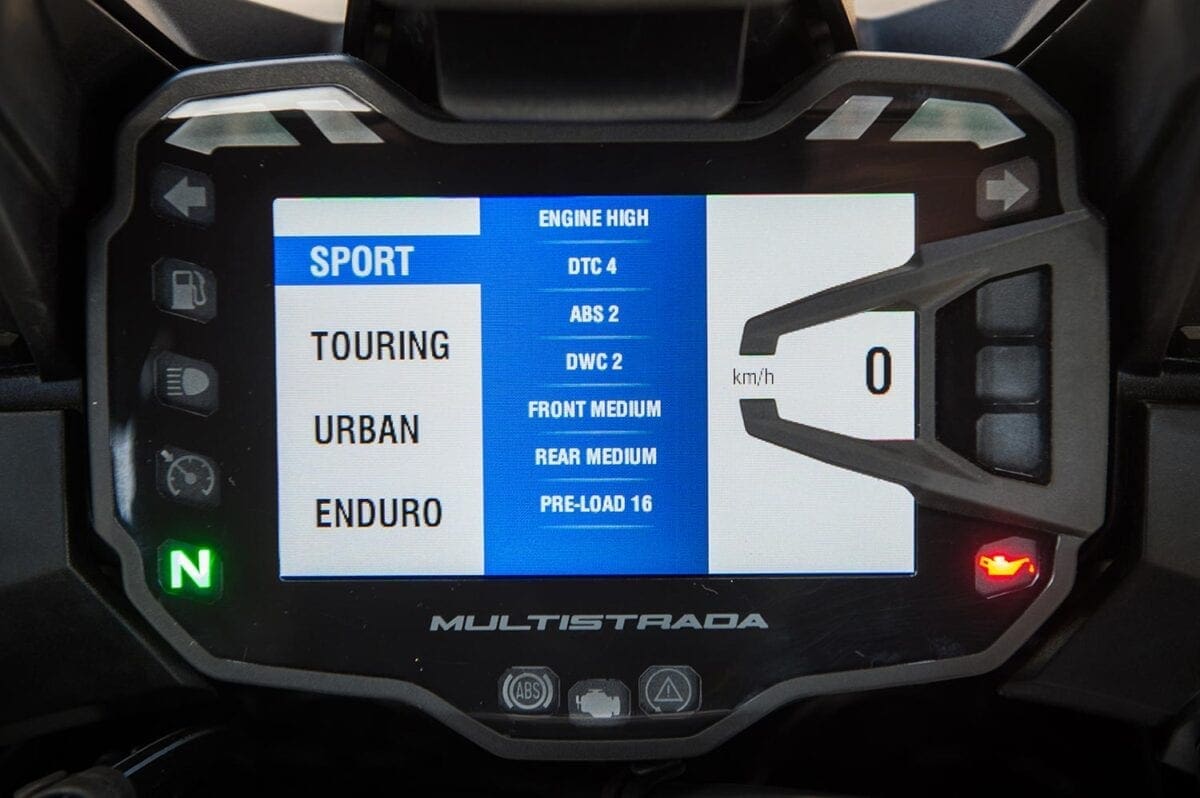2015 Ducati Multistrada 1200 review | From £12,995 | 160bhp@9500rpm | 100lb-ft@7500rpm | 90° V-twin with variable desmodromic valve timing
Tested by John Milbank Photos by Milagro
With 8lb-ft more torque and 15bhp more than a Monster 1200 S, the Multistrada could be a daunting proposition; a howling beast, bristling with pent-up aggression, just waiting to bite its rider on slippery UK and beyond roads. But it’s not. It’s easy to ride, it’s comfortable, and it’s really, bloody fast.
There are three bikes to choose from: the 1200 at £12,995; the 1200S at £15,595 (or £200 more for white paint); and the 1200S D:Air, which includes the electronic Dainese air-bag system (price is to be confirmed).
Tell me about the engine
Desmodromic Variable Timing (DVT) makes this the first bike with double continuously variable camshaft timing. It’s all about valve overlap… put simply, having the exhaust valve open while the inlet opens can increase power at high revs. But at low revs that makes for lumpy low-speed running. There’s usually a compromise, like in the new Ducati Scrambler, which has a reduced overlap to improve city-speed riding, with the side-effect of lower peak performance.
Timing belts drive two cogs in each head from the crankshaft. All very standard, but those cogs are connected to the camshafts by rotating, oil-filled ‘cam phasers’. When oil from the engine is pumped in via solenoids, the relative position of each camshaft to the outer cog can be altered by 22.5° in 0.45 seconds. Cam timing is actually referred to by crankshaft rotation, so as the cams rotate at half the speed of the crank, there’s the potential for a timing change of 45° of crankshaft rotation. The scrambler has 11° of valve overlap, while the first Multistradas had 41°. With DVT operating on both cams, there’s a potential timing phase change of almost zero (smooth), right up to 90° (fast).
If that’s made your head ache, then just know that it gives a 10bhp and 8lb-ft increase, with a homologation-tested 8% drop in fuel consumption (I saw 45mpg on the very stop-start and high-speed launch). Clever stuff, but what’s really impressive is how it smooths out the characteristically lumpy vee. The snatch usually associated with these engines is much reduced; when pulling away it feels strange at first, as if the power’s not there, but it’s all just bought gracefully under control.
To meet Euro 4 legislation, the engine covers are internally ribbed to prevent them resonating – acting like a speaker or drum – and they’re packed with sound-deadening rubber. Sadly the EU party-poopers have imposed a clunky fuel-tank vapour box on the left of the engine (as seen for a while on US bikes), and reflectors on the forks. Both these changes had to be made at the last minute, so missed the opportunity to be incorporated into the otherwise stunning design process.
What’s the chassis like?
Everything is new on the 2015 Multistrada, including the chassis. It’s the usual (lovely) tubular steel trellis frame, but the geometry has been nipped and tucked for comfort. Weight distribution is apparently almost 50/50, and like the previous model, rider and pillion are kept within the wheelbase for the most stable ride. There are four-pot monobloc radial calipers biting 310 mm discs on the standard 1200, but the 1200S gets the 330mm discs and Brembo Evo M50 four-pots from the Panigale 899. Honestly, I couldn’t tell the difference in use – both set-ups are awesome.
And then there are the electronics… both the 1200 and 1200S have the full Ducati Safety Pack of Bosch’s 9ME cornering ABS, traction control and wheelie control. These are all fed by the new Inertial Measurement Unit – a variation on the same Bosch brain used in the Panigale, as well as the new KTMs and Yamaha R1. It looks at roll, yaw, and longitudinal, transverse and vertical acceleration, then compares the data with wheel speed and other parameters to determine the bike’s lean and pitch angle. The 1200S also uses this to help control the Ducati Skyhook Suspension (DSS) – a semi-active system that adjusts front and rear damping, along with the rear preload. DSS featured on the 2013 Multistrada 1200S, but new software, a rear travel sensor and the IMU refine the system and add more control to the damping in corners.
The braking system is combined, but only from front to rear – a conscious decision by Ducati as having the front brake operated by the rear pedal was not considered suitable for Ducati’s sporty ethos.
Should I buy one?
The main benefits of opting for the pricier 1200S are the semi-active suspension and full-colour dash, which includes the Ducati Multimedia System – you can control telephone calls and music streaming, as well as get text message notifications; all from the bike’s display. There’s also an app on the way that lets you record the route and performance data, then save or share it.
The S gains full LED headlights, with one lamp on each side illuminating as the bike leans, brightening the inside of corners more effectively. The uprated Evo brakes won’t really make a lot of difference to most riders, but the extra tech is likely to appeal; 80% of buyers chose the higher spec in previous years.
There are four option packs available, giving a choice of extras (which are all also available separately): ‘Touring’ includes side panniers with a total capacity of 58 litres (you can get a full-face lid in the left-hand one), heated grips (with three levels) and a centre-stand for £950.
‘Sport’ comes with a road-legal carbon-fibre Terminogni silencer, carbon-fibre front mudguard and forged aluminium brake and clutch fluid reservoir covers for £950.
‘Urban’ features a 48 litre top-box (big enough for a pair of full-face lids), semi-rigid tank bag and a USB hub power outlet for £560.
The ‘Enduro’ pack is designed for dirt riding, with Touratech engine, radiator and sump protectors, off-road footpegs, additional LED lights and an enlarged side-stand base for £950. The sub-frame will carry full luggage, so buyers could add the top-box (£479) to the Touring pack, or the panniers (£693) to the Urban pack if they wanted.
There’s a 12V socket by the dash, and the standard seat has removable blocks underneath to allow it to drop from 845mm to 825mm. Even at its highest setting, I found it very easy to get both feet down (I’m 5’11”). A lower seat option takes it down to 800mm. There’s also cruise control, which is quick and easy to set, and can be easily deactivated, including by rolling the throttle forward.
Keyless ignition means you can leave the fob in your pocket when starting (the steering lock is electric), but make sure you don’t leave the key in the side of the bike after lifting the seat to access the small, but handy storage (which includes a USB and second 12V power outlet). If it fell out when riding away, the bike would keep running but you wouldn’t be able to restart it once you stopped. It’d be an easy mistake to make if there wasn’t a Ducati engineer standing nearby to tell you what you’d just done!
Interestingly, the DVT doesn’t add to the bike’s maintenance costs – the system ‘parks’ the cams to make valve clearance checks simple, so you can expect servicing to be around the same as a Monster at about 1.5 hours for a typical service, and 5.5 hours for the biggest.
So what’s it like to ride?
I rode the 1200S before the standard model, and I must admit that at first it felt slightly underwhelming. All the electronic genius of the bike took away some of the immediacy of the powerful engine – it seemed a bit breathless pulling away from a standstill, and far less aggressive than I imagined a 160bhp Ducati to be.
I had the bike in the ‘Touring’ riding mode; delivering all the power, but with a smoother throttle response than the ‘Sport’ mode. Switching over increased the rear preload and gave a noticeably sharper throttle response (Urban and Enduro modes reduce power to 100bhp, with a very pronounced change in feel).
Still though, I didn’t feel completely connected to the bike – there were a few times in the first hour or so of riding that I wasn’t sure what was happening with the machine, not helped by a couple of moments that I felt the engine change its behaviour slightly.
This is ironic really, as I was riding faster than I usually do this early in a press launch. At one point I glanced down and saw some silly numbers on the speedo; they were in kmh, but when I worked out what they were in mph, they were still silly. And that’s the point really – the technology is working. I’ve never ridden something with this much tech, and the Skyhook’s ability to smooth the squatting under hard acceleration, to allow you to feel un-ruffled as the pace picks up and the surface gets worse helps the Multistrada make you a better rider.
But don’t forget that Ducati has given complete control over every variable in each of the four riding modes (with default settings always easily accessible). If you want the ABS to be less powerful, you can. If you feel the need to disable the wheelie control (or adjust it so the front wheel goes higher) you can. It’s not a matter of putting up with technology interfering with your ride, it’s more a case of raising your expectations. And who would really complain of technology that stops the bike from standing up if you need to brake mid-turn?
I did have one issue with the ride-by-wire system – exiting two corners the traction control took over with lights flashing on the dash and the power drastically reduced. A combination of sand on the road and poor throttle control? Maybe, but I reported it to Marco Sairu – Head of Engine Project Management – that evening who told me that while they did suspect the roads were sometimes deceptively slippery, another journalist had experienced it, and the data from the bikes had already been sent to Bologna for analysis. He thought that the traction control may occasionally have been acting too aggressively, but that the fix would be simple. It’s what launches can be for; ironing out the little unexpected glitches before a bike hits the market. And of course, software can be very quickly updated.
The engine has been raised to improve ground clearance when off-road, but that increase in centre-of-gravity doesn’t spoil the ride quality – on the Tarmac, the bike turns in easily, holds its line well, and feels stable when accelerating hard. On the dirt, its small-for-off-road 17” wheel doesn’t feel the best when you catch a rut, but it works, with the S version also winding the preload up to max when the ‘Enduro’ mode is selected. Like most adventure bikes, the Multistrada is unlikely to see much mud, but there’s capability enough for the times that the Tarmac ends.
Riding the standard bike – without Skyhook – I felt more at home. All the ride-by-wire technology is the same, but the more ‘natural’ feedback of traditional suspension put me at ease; I preferred it. Until I got back on the S model, where I realised I was slightly faster again on the Lanzarote roads. Once I’d accepted that the Multistrada’s technology was a compliment to my own ability, not a hinderance, we gelled a lot more.
The screen is brilliant, being easily adjustable with one hand and just the right size for my average height. The bike’s a wonderful place to sit; roomy for both rider and pillion, and the DVT makes for a smooth, unflustered ride, but still with a staggering ability to blast past traffic or hack through corners in an instant.
The Multistrada inspires huge confidence on the road. As a bike to ride across any surface, in any conditions, and at any speed, it’s a masterpiece of engineering, with all the style and character that I love about Ducatis.
Tech Spec
Engine: 1198.4cc Testastretta with Desmodromic Variable Timing, liquid cooled
90° V-twin
Power: 160bhp (117.7kw) @ 9500rpm
Torque: 136 Nm (100.3 lb-ft) @ 7,500 rpm
Wet weight: 232 kg
Seat height: 825mm or 845 mm
Fuel capacity: 20 litres

